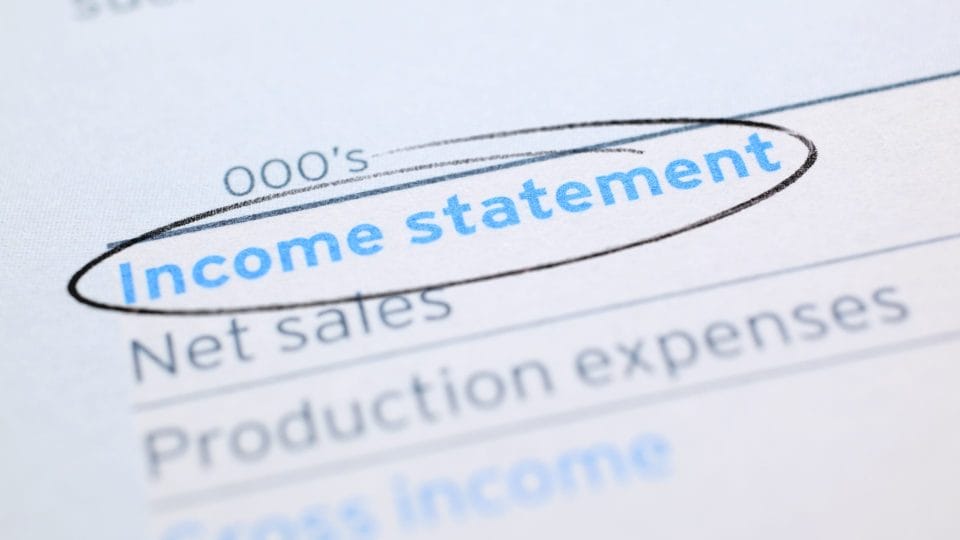Want to boost profits, control costs, and make data-driven decisions? Understanding your income statement is the first step toward turning your restaurant into a money-making machine. Let’s break it all down so you can maximize your revenue and keep your business thriving.
Setting Up Your First Restaurant Income Statement
“When it comes to bookkeeping, every restaurateur wants to know just one thing: are we making money?” — Founders CPA, Accounting firm specializing in startups and small businesses
Creating accurate financial records starts with proper organization of your restaurant’s income statement. First of all, this financial document provides a clear picture of your revenue, expenses and profitability. First of all, this financial document provides a clear picture of your revenue, expenses and profitability.
Gathering essential financial documents
Your restaurant’s point-of-sale system serves as the primary source for sales information. Furthermore, you’ll need to collect records for various payment methods, including cash receipts, credit card transactions and gift card sales.
The accuracy of your income statement depends heavily on your balance sheet. When these two documents align, you get a true picture of your net profit. Subsequently, reconciling your bank statements becomes crucial – think of it as your financial report card.
Choosing the right time period
Selecting the right timeframe for your income statement shapes how you’ll track your restaurant’s performance. You have several options for review periods:
- Weekly tracking for immediate insights
- Monthly analysis for trend identification
- Quarterly reviews for seasonal patterns
- Annual assessments for long-term planning
The key lies in consistency with your chosen timeframe. As a result, you’ll be able to spot trends early and make timely adjustments to your operations.
Most restaurants maintain regular updates to stay current with their financial position. For instance, if your labor costs reach 32% of sales when budgeted for 30%, you can quickly adjust staffing levels to protect profit margins. This approach to monitoring helps maintain the typical restaurant profit margin of 3% to 5%.
Remember that your costs typically amount to more than 90% of total restaurant revenue. Therefore, regular financial reviews become essential for maintaining profitability. Many restaurant managers check these numbers multiple times daily to ensure they stay on track with their financial goals.
Breaking Down Revenue Sources
Revenue sources form the foundation of your restaurant’s financial success. A thorough analysis of income streams helps identify growth opportunities and optimize profitability.
[Source: Lightspeed]
Food and beverage sales analysis
Your primary revenue comes from food and beverage sales, which requires careful monitoring through your Point of Sale (POS) system. The POS data reveals crucial insights about total covers, average check size and sales patterns by server.
Restaurants generate 48% of their revenue from on-premises dining. Notably, households with incomes above $100,000 account for nearly 60% of restaurant spending. This data helps you tailor your menu pricing and marketing strategies to your target demographic.
Catering and special events income
Catering services offer significant profit potential, with well-established businesses earning up to 25% pre-tax profit. The standard catering business maintains food costs between 27% and 29% of gross sales, while labor costs should stay within 16% to 17%.
Special events create additional revenue opportunities through private dining and themed experiences. Indeed, 93% of diners show greater willingness to make reservations at restaurants offering special events. Your Chef can develop specialized menus for weddings, corporate gatherings and holiday celebrations to maximize profitability.
Other revenue streams
Alternative income sources help protect your business during slow periods. Consider these proven revenue generators:
- Cooking classes and workshops led by your Chef
- Branded merchandise sales
- Meal kit services for at-home dining
- Wine club memberships and tastings
Essentially, 21% of restaurant revenue now comes from offerings beyond standard meals. Moreover, 88% of restaurants plan to expand these alternative revenue streams. Rather than relying solely on traditional dining sales, diversifying income sources strengthens your financial stability.
Overhead costs, specifically rent and utilities, generally amount to about 9% of gross catering revenue. Although expanding into new revenue streams requires initial investment, the potential returns make it worthwhile for long-term growth.
Understanding Your Restaurant’s Expenses
Managing expenses effectively determines the success of your restaurant’s financial performance. A clear understanding of cost structures helps maintain healthy profit margins and sustainable growth.
Fixed vs variable costs
Fixed costs remain constant regardless of your sales volume. These expenses primarily include rent, mortgage payments, insurance premiums and license fees. Your monthly rent or mortgage typically accounts for 5-10% of revenue. Meanwhile, property insurance costs range between $1,000 to $2,500 annually.
Variable costs fluctuate based on your business activity and sales volume. Food costs, particularly, should stay between 25-40% of food sales. Labor costs, another significant variable expense, typically amount to 30% of revenue, with management salaries accounting for 10% of this figure.
Operating expense categories
Restaurant operating costs consume 90-95% of revenue, leaving a typical profit margin of 5-10%. Here’s a breakdown of major operating expenses:
- Food and beverage inventory: Requires careful tracking as prices can change weekly
- Labor and payroll: Includes hourly wages, benefits and payroll taxes
- Utilities and services: Covers electricity, water, internet and phone services
- Equipment maintenance: Encompasses repairs and regular upkeep
- Marketing and technology: Involves POS systems, websites and promotional activities
Successful restaurants track these expenses meticulously through modern accounting systems. Particularly, prime costs – the combination of food and labor expenses – should hover around 60% of total revenue. Consequently, maintaining detailed records of both fixed and variable costs becomes crucial for financial planning.
Regular monitoring of these expense categories helps identify areas for cost reduction. Nevertheless, it’s important to note that certain variable costs, such as food expenses, may increase during peak business periods. Understanding these patterns allows for better budget allocation and expense management throughout the year.
Calculating Key Performance Metrics
“A restaurant income statement will tell you exactly that. Also known as a Profit/Loss Statement, the income statement provides an at-a-glance view of your income, outgoings, and overall profitability.” — Founders CPA, Accounting firm specializing in startups and small businesses
Tracking key financial metrics helps shape smart business decisions for your restaurant. Primarily, three crucial measurements determine your operational success.
Prime cost ratio
Prime cost combines your food and labor expenses, representing the largest controllable costs in restaurant operations. Full-service restaurants aim to maintain prime costs at 60% of total sales. Quick-service establishments typically target a lower percentage, around 55%.
To calculate your prime cost ratio, add your total Cost of Goods Sold (COGS) to your total labor costs, then divide by total sales. For example, if your monthly food costs total USD 3000.00 and labor costs reach USD 2000.00 with sales of USD 20000.00, your prime cost percentage would be 25%.
Break-even point analysis
Break-even analysis reveals the sales volume needed to cover all expenses without generating profit. This calculation helps set realistic sales targets and control costs. The break-even formula considers both fixed and variable costs:
Break-even Point = Total Fixed Costs ÷ [(Total Sales – Total Variable Costs) / Total Sales]
Fixed costs include rent, insurance and property tax, whereas variable costs encompass food, labor and credit card fees. Accordingly, if your fixed costs are USD 7000.00 and variable costs reach USD 5000.00 with monthly sales of USD 20000.00, your break-even point would be USD 9333.33.
Profit margin goals
Restaurant profit margins vary based on service type and operational efficiency. Full-service restaurants typically achieve margins between 2-6%. Straightaway, here’s what different restaurant types can expect:
- Fast-food establishments: 6-9% profit margins
- Cafes: 2.5-15% profit margins
- Catering businesses: 7-8% average margins
To improve profit margins, focus on menu pricing optimization.
Undoubtedly, food cost percentage should stay between 28-35% for financial health.
Soon after implementing proper pricing strategies, many restaurants see improved profitability through better cost control and increased sales volume.
Regular monitoring of these metrics through your restaurant income statement helps identify areas for improvement. Obviously, maintaining detailed records of sales, costs and profits enables data-driven decisions that support long-term success.
Creating Monthly Financial Reports
Monthly financial reports serve as the backbone of restaurant accounting, providing clear insights into your business performance. Primarily, three essential statements form the foundation of your financial reporting: the profit and loss statement, balance sheet and statement of cash flows.
Income statement templates
Restaurant income statement templates must capture detailed information beyond basic tax requirements. Presently, modern accounting software automates this process, eliminating the tedious task of managing spreadsheets. Your template should track these key components:
- Food and beverage sales by category
- Cost of goods sold calculations
- Labor expenses including benefits
- Operating costs breakdown
- Profit margins and ratios
The template’s structure affects how effectively you can assess business decisions. Basically, every choice you make, from changing menu prices to adjusting portion sizes, creates financial ripples that your income statement must reflect. The amount used for food cost calculations requires specific attention, following the formula: Beginning Inventory + Purchases – Ending Inventory.
Professional hospitality accounting firms often assist new restaurants in setting up QuickBooks files and procedures. This initial setup ensures accurate tracking and reporting from day one. Comparatively, restaurants using proper templates maintain better control over their typical 3-5% profit margins.
Comparison reports
Multi-unit financial summaries enable side-by-side analysis of performance metrics. Concurrently, these reports drill down into meaningful data points:
- Guest check patterns
- Inventory item trends
- Purchasing details
- General ledger distribution
Weekly financial packages provide operators with rapid decision-making capabilities. Explicitly, this frequent analysis helps maintain peak financial performance through proactive management. Your comparison reports should align with an accounting cycle that works for your business – whether 13 period, 445 or 544.
Machine learning and historical data now power precise projections in modern reporting systems. These tools analyze trends within budgets and forecasting, helping you anticipate market conditions. Certainly, this strategic planning optimizes resources and mitigates risks in your restaurant operations.
Real-time data access through comprehensive financial dashboards empowers operators to quickly identify trends and adjust budgets. Similarly, detailed reporting enhances strategic planning and forecasting, supporting your restaurant’s competitive advantage. Ultimately, these comparison reports arm you with the insights needed to make faster, more informed decisions that directly increase profits.
Conclusion
Your restaurant’s success depends on more than just delicious dishes – it hinges on smart financial management. Mastering your income statement gives you the power to optimize costs, increase profitability and future-proof your business. Remember, the most profitable restaurants aren’t just the best at cooking; they’re the best at counting.
Restaurant Income Statement FAQ
A restaurant income statement typically includes revenue sources (such as food and beverage sales), expenses (like food costs and labor), and profitability metrics. It provides a clear picture of the restaurant’s financial health over a specific period.
Profit margins vary by restaurant type, but generally, full-service restaurants aim for 2-6%, fast-food establishments 6-9%, and cafes 2.5-15%. A typical restaurant profit margin falls between 3-5% of total revenue.
Restaurants can diversify income by offering catering services, hosting special events, conducting cooking classes, selling branded merchandise, providing meal kit services, or starting wine club memberships. These alternative streams can contribute significantly to overall revenue.
The prime cost ratio combines food and labor expenses, typically aiming to be around 60% of total sales for full-service restaurants. It’s crucial because it represents the largest controllable costs in restaurant operations and directly impacts profitability.
Restaurant owners should review financial statements regularly, with many checking key metrics multiple times daily. Monthly analysis is common for identifying trends, while quarterly reviews can reveal seasonal patterns. Consistent monitoring allows for timely adjustments to maintain financial health.

Written by Lidija Misic
Lidija holds a BA in English Language and has lived in five different countries, where she has worked in various roles, including as a flight attendant, teacher, writer and recruiter. Her biggest passion is crafting great content and reading. She is particularly passionate about creating punchy copy that inspires people to make positive changes in their lives.

Reviewed by Marcy Miniano
Marcy is an editor and writer with a background in public relations and brand marketing. Throughout her nearly decade-long career, she has honed her skills in crafting content and helping build brands across various industries — including restaurant and hospitality, travel, tech, fashion and entertainment.




